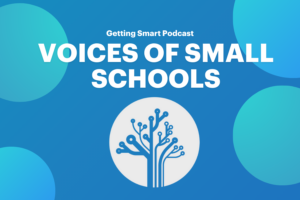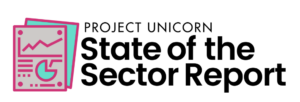Making Data Work Together Is the Key to Better Achievement

By John LaPlante
In the Youngstown City Schools, a high-poverty school district serving about 5,000 students in northeastern Ohio, our students face significant challenges. The industrial economy on which our city was based has struggled for years, and although we are in the midst of an urban renewal project, the city’s median household income was only $24,000 according to the most recent Census. A decade ago, CNNMoney said Youngstown had the lowest median income of any U.S. city with more than 65,000 residents.
Despite these hurdles, our district is showing promising signs of progress. In fact, earlier this year we were proud to witness our students achieved double-digit growth in their scores on Northwest Evaluation Association (NWEA) benchmark exams.
We give these exams to all students in grades 2-12 (reading) and K-12 (math) to track their academic progress. From the beginning of the 2017-18 school year to the middle of the year, students saw an average gain of 18 percent in reading and 15 percent in math. While there are a number of factors responsible for this mid-year growth, a key element is our district’s use of data to inform instruction and intervention.
We are pulling data from a number of different sources, and we aggregate this information to create an “on track” score for every child. This score, based on various indicators, tells us whether students are at low, moderate, or high risk of failure. Using this early warning system, we can develop academic plans for each student and intervene in time to keep students on track for success.
These reports are unique to each grade level, because we look at different sets of data per grade level. For example, in Ohio, we have the Kindergarten Readiness Assessment (KRA), which is only given to kindergarten students. Similarly, we have the PSAT test which is only given to students in grades 8 and 9. We give the iStation assessment monthly, but only to kids in grades K-8. DIBELS and Text Reading Comprehension (TRC) tests are given only to students in grades K-3. And of course, we have NWEA assessments as identified above.
Each grade-level report includes the data that are tracked for students in that particular grade. We also look at attendance and behavioral data. We have set thresholds for low, moderate, or high risk for each set of indicators, and when the data is compiled together, we can easily see which students might need further intervention to make sure they are achieving on grade level.
Teachers are using these reports during conferences with parents and in Teacher-Based-Team (TBT) meetings. In these meetings, they discuss which students need which types of interventions, so that students are getting the extra help they need to succeed.
The real power comes when these data points are working together. If we just look at attendance information, or if we just look at scores from one set of assessments, we can’t see the whole picture on a student. A student might be performing fine in one area but have red flags in two others. Our district has specific intervention programs in each of our main focus areas. Academic intervention programs are targeted to reading, writing, mathematics, science, and social studies. Similarly, behavioral intervention programs are targeted to social and emotional learning (SEL) as well as our student code of conduct. By having multiple data points working together, we can get a more complete picture that helps us make better decisions about each student’s needs.
There are a number of tools available to track and assemble data. Our district uses an assessment and data management system from Illuminate Education to compile these “on track” scores and view the whole student. The key is to pull data from multiple sources, aggregate this information, and come up with a way to identify results that fall within a certain level for each category of information (we look forward to a point in time when initiatives like Project Unicorn have moved the industry towards full interoperability across data systems).
When data works together to give a complete picture of each student, the results can be very powerful. As a result of these reports, our teachers are more in tune with the progress of their students—and where the warning signs are. Our teachers and administrators feel comfortable making more informed decisions about students’ needs. As a result, we are seeing achievement rise from our efforts.
For more, see:
- Getting Smart on Data Interoperability
- Powerful Learning Experiences at the Intersection of Big Data and Big Empathy
- Closing The Achievement Gap With The Power of Data
John LaPlante is the Chief Information Officer for the Youngstown City Schools in Ohio. Connect with him on Twitter: @JohnBLaPlante
Stay in-the-know with all things EdTech and innovations in learning by signing up to receive the weekly Smart Update. This post includes mentions of a Getting Smart partner. For a full list of partners, affiliate organizations and all other disclosures, please see our Partner page.







0 Comments
Leave a Comment
Your email address will not be published. All fields are required.